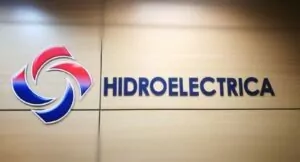Romania has proposed, through the National Recovery and Resilience Plan (NRRP), to reduce the VAT collection deficit by at least five percentage points by mid-2026, compared to 2019, and to increase tax revenue by 2.5 percentage points of GDP by the end of 2025, says Vlad Boeriu, coordinating partner, Tax and Legal Services, Deloitte Romania, quoted by Agerpres.
Urmărește mai jos producțiile video ale Economedia:
- articolul continuă mai jos -
“The National Recovery and Resilience Plan (NRRP), recently approved by the European Commission, foresees, beyond the directions assumed for the absorption of the 29 billion euros, also a set of tax reforms to be implemented by the end of 2026. These include modernizing the administration with two main objectives – increasing tax revenue by 2.5 percentage points of GDP by the end of 2025 and reducing the VAT collection deficit by at least five percentage points by mid-2026 (both relative to 2019). The second target can be considered conservative, given the experience of neighboring countries in reducing tax evasion as a result of implementing efficient methods to increase collection, such as SAF-T or e-invoicing,” Vlad Boeriu says in an opinion piece.
According to Deloitte, among the most important actions undertaken by Romania in the tax area through the NRRP is the analysis of the tax system in 2022, with the aim of standardizing legislation in terms of income taxation, and the gradual elimination of incentives in certain areas.
The Deloitte representative announces, in this context, that for the construction sector it is expressly stated that the withdrawal of the facilities granted must begin in 2025 and be completed by the end of 2028, when it would otherwise expire under the current regulations. In addition, the plan provides for changes in company taxation (especially for micro-enterprises), social security contributions and property taxes. The measures would be phased in gradually by early 2024 and bring an increase in tax revenue of 0.5 percentage points of GDP by 2025 compared to 2019.
“However, the biggest focus is on tax administration reform, in particular in the direction of improving digital services (expansion of the VPS for companies, partnerships, PFAs and liberal professions), optimizing the IT system of the National Tax Administration Agency (ANAF), so that 60% of services for companies are accessible online in 2024 (compared to 45% today) or carrying out remote tax controls (60% of the total by 2025),” says Vlad Boeriu.
He also points out that the plan also includes the process of enrolling central and local public authorities and institutions in the Ministry of Finance and ANAF’s IT system, PatrimVen, from 1 March 2022.
“Moreover, many of the measures provided for in the NPRP are already at various stages of implementation – the connection of electronic cash registers to the ANAF system, with a deadline of 30 November 2021 for all taxpayers, the One Stop Shop mechanism for electronic registration for VAT purposes, or the e-invoice project, planned to operate, in the first phase, in the relationship between legal entities and state institutions and later to be extended to invoices issued between companies,” the author points out.































